We had a gentle start to the day with breakfast at 8.30am then we contacted a few people in NZ on Skype before we walked over to the Abbey. It was a bit drizzly but we made our way through the busy streets, looking at the various shops selling sweets and gifts as well as all the tea shops and fish and chip shops. We made out way up the 199 steps to the old church first. This was busy, in part because of the drizzle I suspect. It was the first church where I have been aware of private pews. I am not sure if they are still used but some did have a private sign on them. There was a sheet over one with the comment that the church maid used to cover all private and reserved pews after service so any smuts from the fire used to heat the church would not land in the pew and mark 'Sunday clothing'.
We picked up our audio guides then walked around the Abbey ruins
. I was not aware of the previous history here. There is evidence of human inhabitation in this area since 657 AD when a well known Anglo-Saxon religious community was based here. The Abbess was called Hild and she was in charge of 2 communities. There was a nunnery but also a monastery under her control. The next Abbess was the former Queen, and her daughter, St Alfred (sp), followed her. The Venerable Bede wrote quite a lot about the community at the time.
There is no real information about why the community disappeared although there have been suggestions of a Viking raid. Then a Benedictine community started here and over a number of years it grew and a magnificent abbey was built. The audio guide gave us details of the abbey over the years and also had voiceovers based on the life of a brother at the time. There were 20 brothers in residence and they would have attended 8 services per day.
At the time of the dissolution of the monasteries one of Henry 8th friends took over the priors house and built Chomley House around it. He used many of the stones from the abbey in the building. This is now the English Heritage visitors centre for the Abbey and had extra displays inside. They included many archeological items found on the site.
We walked back to the BnB along other equally interesting streets. There was an area called the Shambles which had a narrow street like the Shambles in York
. There are lots of narrow lanes but we especially noted Argument Lane and took the obligatory photo.
After a break we went out in the car for drive around the area. We set off for Robin Hood bay but the parking costs puy us off so we just drove in the direction of Scarborough finding caches on the way. The caches took us for a couple of walks as well as finding us a nice pub for afternoon tea. We started to recognise the style of a group of local cachers who usually put their cachers in a camo bag often with an interesting item inside. We found a bird a cat and a skull (Yorick). We found the cricket grounds at Scarborough then set off to do a triangular route. By then it was getting late so after doing all the caches in one small village we stopped for tea at a country pub.
On the way home we did a couple more caches as we went past Horcum hole, the place the Yorkshire man we met in France told us we must visit. The legend is that Horcum Hole was created when a giant named Wade, who was in fact a Saxon chief, grabbed a 'handful' of earth to throw at his wife, Bell - the soil missed its target and landed to form the 800ft high hill of Blakey Topping which lies about a mile to the east. We also visited the plaque which commemorates the "Incident at Bannial Flatt Farm" - the site of the first enemy plane to crash on English soil in the Second World War.
We found a car park about 20m from the BnB and John had time to check some cricket on the internet, while I completed some blogs and logged the days’ haul of about 15 caches (not quite a record for us).
On the prowl at Whitby
Tuesday, August 10, 2010
 Whitby, England, United Kingdom
Whitby, England, United Kingdom
Other Entries
-
67Arriving in Paris
Jul 2417 days prior Paris, Francephoto_camera6videocam 0comment 0
Paris, Francephoto_camera6videocam 0comment 0 -
68Our Tour de Paris
Jul 2516 days prior Paris, Francephoto_camera17videocam 0comment 1
Paris, Francephoto_camera17videocam 0comment 1 -
69One evening in Paris
Jul 2615 days prior Paris, Francephoto_camera12videocam 0comment 0
Paris, Francephoto_camera12videocam 0comment 0 -
70Arriving 'home' in London
Jul 2714 days prior London, United Kingdomphoto_camera1videocam 0comment 0
London, United Kingdomphoto_camera1videocam 0comment 0 -
71The geocaching geeks of Gunnersbury
Jul 2813 days prior London, United Kingdomphoto_camera8videocam 0comment 0
London, United Kingdomphoto_camera8videocam 0comment 0 -
72Goin' to the pikshers and kulture and stuff
Jul 2912 days prior London, United Kingdomphoto_camera9videocam 0comment 0
London, United Kingdomphoto_camera9videocam 0comment 0 -
73'Oranges and Lemons...'
Jul 3011 days prior London, United Kingdomphoto_camera9videocam 0comment 2
London, United Kingdomphoto_camera9videocam 0comment 2 -
74Locks and castles
Jul 3110 days prior London, United Kingdomphoto_camera15videocam 0comment 0
London, United Kingdomphoto_camera15videocam 0comment 0 -
75North to Chelmsford
Aug 019 days prior Chelmsford, United Kingdomphoto_camera5videocam 0comment 0
Chelmsford, United Kingdomphoto_camera5videocam 0comment 0 -
76'Sarf End'
Aug 028 days prior Chelmsford, United Kingdomphoto_camera17videocam 0comment 0
Chelmsford, United Kingdomphoto_camera17videocam 0comment 0 -
77"Twinkle, twinkle, little star'
Aug 037 days prior Chelmsford, United Kingdomphoto_camera19videocam 0comment 1
Chelmsford, United Kingdomphoto_camera19videocam 0comment 1 -
78A Constable landscape
Aug 046 days prior Chelmsford, United Kingdomphoto_camera15videocam 0comment 2
Chelmsford, United Kingdomphoto_camera15videocam 0comment 2 -
79Off to the Wash
Aug 055 days prior Dersingham, United Kingdomphoto_camera12videocam 0comment 0
Dersingham, United Kingdomphoto_camera12videocam 0comment 0 -
80Blickling Hall
Aug 064 days prior Dersingham, United Kingdomphoto_camera18videocam 0comment 0
Dersingham, United Kingdomphoto_camera18videocam 0comment 0 -
81A quick visit to Liz's place
Aug 073 days prior Dersingham, United Kingdomphoto_camera17videocam 0comment 0
Dersingham, United Kingdomphoto_camera17videocam 0comment 0 -
82Kings and castles
Aug 082 days prior Dersingham, United Kingdomphoto_camera14videocam 0comment 0
Dersingham, United Kingdomphoto_camera14videocam 0comment 0 -
83Beautiful Whitby
Aug 091 day prior Whitby, United Kingdomphoto_camera23videocam 0comment 1
Whitby, United Kingdomphoto_camera23videocam 0comment 1 -
84On the prowl at Whitby
Aug 10 Whitby, United Kingdomphoto_camera13videocam 0comment 0
Whitby, United Kingdomphoto_camera13videocam 0comment 0 -
85Rob Roy territory
Aug 111 day later Lochearnhead, United Kingdomphoto_camera11videocam 0comment 0
Lochearnhead, United Kingdomphoto_camera11videocam 0comment 0 -
86'By yon bonnie banks'
Aug 122 days later Inverness, United Kingdomphoto_camera17videocam 0comment 0
Inverness, United Kingdomphoto_camera17videocam 0comment 0 -
87To the top at John O'Groat's
Aug 133 days later Inverness, United Kingdomphoto_camera13videocam 0comment 0
Inverness, United Kingdomphoto_camera13videocam 0comment 0 -
88Dawdling down to Dumfries
Aug 144 days later Dumfries, United Kingdomphoto_camera14videocam 0comment 0
Dumfries, United Kingdomphoto_camera14videocam 0comment 0 -
89A visit to wee Robbie
Aug 155 days later Dumfries, United Kingdomphoto_camera22videocam 0comment 0
Dumfries, United Kingdomphoto_camera22videocam 0comment 0 -
90Off to see cookie bear
Aug 166 days later Shrewsbury, United Kingdomphoto_camera8videocam 0comment 0
Shrewsbury, United Kingdomphoto_camera8videocam 0comment 0 -
91Hanging out with Sabrina
Aug 177 days later Shrewsbury, United Kingdomphoto_camera20videocam 0comment 0
Shrewsbury, United Kingdomphoto_camera20videocam 0comment 0 -
92Welcome to Wales boyo
Aug 188 days later Cardiff, United Kingdomphoto_camera9videocam 0comment 0
Cardiff, United Kingdomphoto_camera9videocam 0comment 0 -
93Wales in the wet
Aug 199 days later Cardiff, United Kingdomphoto_camera5videocam 0comment 1
Cardiff, United Kingdomphoto_camera5videocam 0comment 1 -
94Cardiff Castle to Barnhill Cottage
Aug 2010 days later Brampford Speke, United Kingdomphoto_camera16videocam 0comment 1
Brampford Speke, United Kingdomphoto_camera16videocam 0comment 1 -
95The Black Adderrrr....
Aug 2111 days later Brampford Speke, United Kingdomphoto_camera7videocam 0comment 0
Brampford Speke, United Kingdomphoto_camera7videocam 0comment 0 -
96Visiting the rellies in Kents Caves
Aug 2212 days later Brampford Speke, United Kingdomphoto_camera12videocam 0comment 0
Brampford Speke, United Kingdomphoto_camera12videocam 0comment 0 -
97Moor travels
Aug 2313 days later Brampford Speke, United Kingdomphoto_camera14videocam 0comment 0
Brampford Speke, United Kingdomphoto_camera14videocam 0comment 0 -
98Motoring to Bealieu
Aug 2414 days later Chichester, United Kingdomphoto_camera10videocam 0comment 1
Chichester, United Kingdomphoto_camera10videocam 0comment 1 -
991066 and all that
Aug 2515 days later Chichester, United Kingdomphoto_camera3videocam 0comment 0
Chichester, United Kingdomphoto_camera3videocam 0comment 0 -
100Catching up with Chalky and Pam
Aug 2616 days later Chichester, United Kingdomphoto_camera16videocam 0comment 0
Chichester, United Kingdomphoto_camera16videocam 0comment 0 -
101Visiting Leeds Castle
Aug 2717 days later Chichester, United Kingdomphoto_camera10videocam 0comment 0
Chichester, United Kingdomphoto_camera10videocam 0comment 0 -
102Chichester to Winchester to London
Aug 2818 days later London, United Kingdomphoto_camera26videocam 0comment 0
London, United Kingdomphoto_camera26videocam 0comment 0

 Whitby, England, United Kingdom
Whitby, England, United Kingdom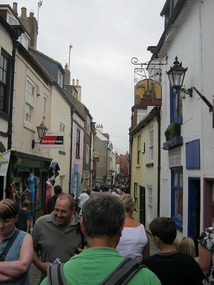
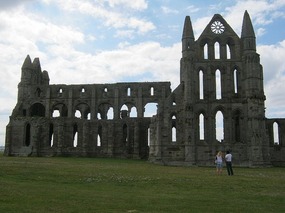


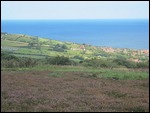
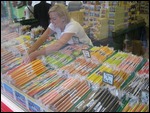
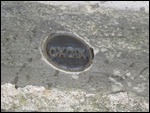
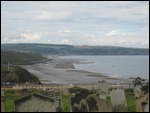


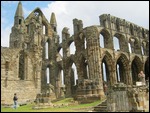
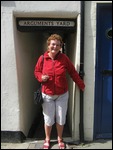
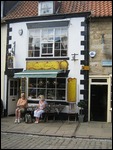
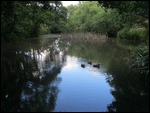
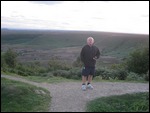
2025-05-22